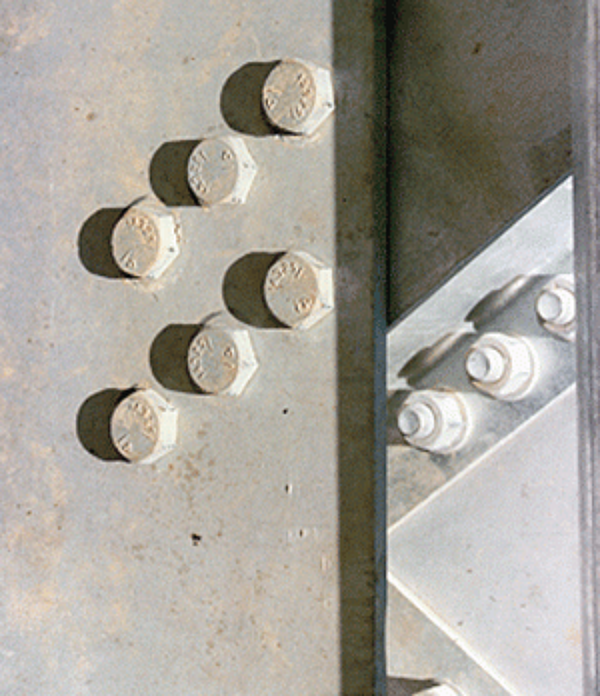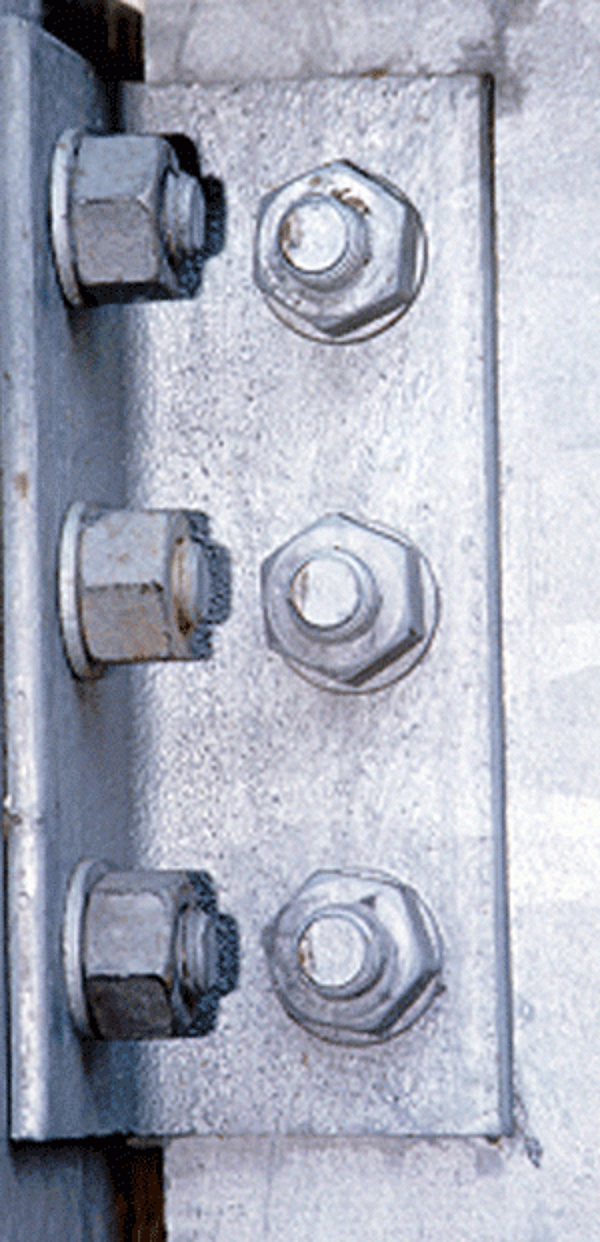Hole Sizes

When the decision is made to hot-dip galvanize, it is important to consider all aspects of the project, down to the smallest hole. Because hot-dip galvanizing is a coating of zinc on bare steel, the original steel becomes slightly thicker. Typical galvanized coatings range from 3-8 mils (75-200 microns). When designing and detailing tapped holes, the increased thickness is important.
Hole sizes in certain fabricated steel products must be oversized to account for the zinc that bonds to the edges. If after galvanizing the hole is still not large enough, it can be retapped. Retapping will not necessitate regalvanizing. Because of the zinc coating's cathodic properties, the coating on the mating fastener will protect chased or retapped nuts.
For holes that will be threaded after galvanizing, the hole should be drilled undersize before galvanizing so the threads can be cut after galvanizing.

Clearance holes must be designed to account for zinc pickup. Oversizing holes according to ASTM guidelines is usually sufficient to account for the thickness of the zinc coating.
Threaded assemblies must adequately accommodate galvanized fasteners. It is important to make sure the hole is undersized enough so that when cutting the threads, all zinc is removed and the hole is still accurately sized. If all of the zinc is not removed from the threaded hole, its relatively soft structure may become damaged when fitting the hole with a fastener. It is best to mate a galvanized fastener with threads solely composed of steel to ensure a quality bolted connection. When threads have been cut it will expose bare steel, but utilizing a hot-dip galvanized fastener in the threaded hole will cover the bare steel and give protection from corrosion for the bolted connection.
Uncoated fasteners should never be put in a galvanized threaded hole. Zinc's cathodic protection characteristics cause it to sacrifice itself to protect the uncoated fastener, accelerating the rate in which zinc is consumed.
Minimize the use of very small holes that may become completely obscured by zinc. If small holes are unavoidable and become filled with zinc, the area may be heated after galvanizing in order to remove the excess zinc and open the hole.
